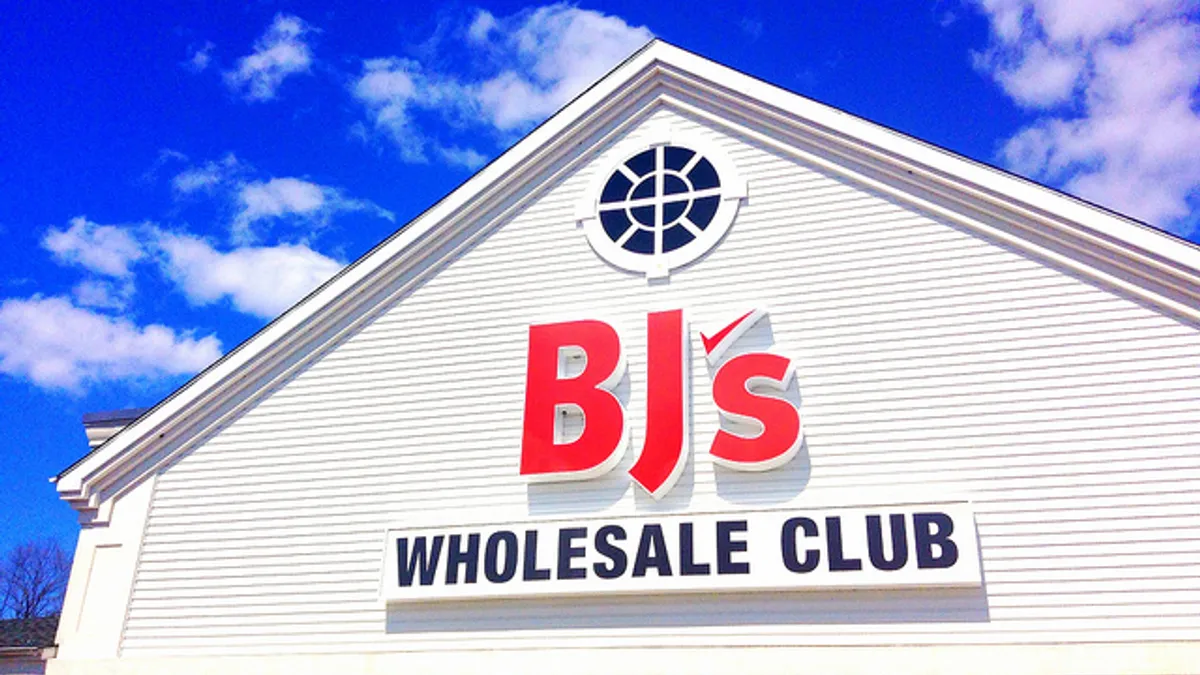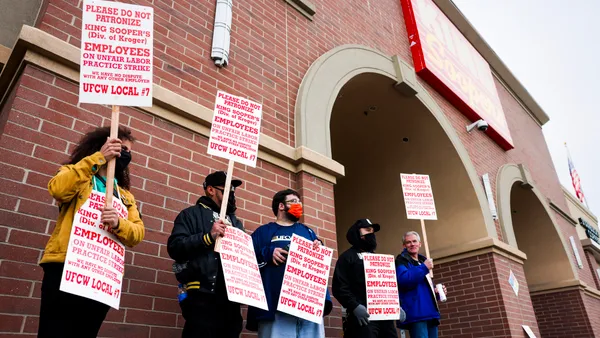Dive Brief:
- BJ's Wholesale Club's sales rose 2.5% during the Q1 according to the retailer's quarterly sales call, reaching $3.07 billion compared to $2.99 billion in the previous year. On top of the growth, membership sales saw an 8% jump at $73.4 million.
- Comparable store sales rose 2% and gross profit increased 4.1% year-over-year to $574 million. Operating income also increased 1.4% to $71.9 million, while operating margin stayed steady at 2.3%.
- The retailer stated its plans to focus the remainder of this year on adding more grocery offerings, particularly when it comes to perishable goods and digital services.
Dive Insight:
BJ's is taking steps to increase its market share by boosting membership levels, lowering prices and adding on-trend digital offerings. But to compete with other big bulk stores like Sam's Club and Costco, the retailer says it is now doubling down on improving its grocery segment.
"We've done changes to health and beauty and the next place to go is grocery," Christopher Baldwin, company chairman, CEO and president, said during the quarterly sales call.
The retailer has already started the shift. A report last year found that BJ's is closing the gap between fresh products and bulk shopping by offering more fresh and perishable foods to boost in-store traffic. Currently about 20% of the chain's members make weekly visits. Private label remains a strong backbone for the company, particularly its natural and organic-focused line Wellsley Farms. It also launched a private label wine lineup last quarter, which features five new wines. Its first quarter sales of perishables, including frozen foods, however, were impacted by a change in the way that government assistant benefits are administered, Baldwin noted.
Convenience is another key priority as the retailer continues to invest in digital services, including delivery, store pickup and a revamped app that led to a 20% increase in downloads during Q3 of last year. It also launched a reordering service last quarter that makes it easier for users to regularly purchase their favorite products. The focus on digital growth will continue well into the rest of the year, according to Baldwin.
When it comes to digital, rival Sam’s Club is currently leading, largely due to the deep resources and R&D capabilities that parent company Walmart has to offer. The chain is testing faster Scan & Go technology at a Dallas location and converting some of its stores to online fulfillment centers to help keep up with online sales. It rolled out same-day delivery to more than half its stores last year and stocks a variety of popular grocery items, including USDA prime beef as well as local options.
Meanwhile, Costco appears to be a crowd favorite, surpassing even Amazon in terms of customer satisfaction. Some 90% of members renew their subscriptions, and there is strong brand loyalty for its Kirkland Signature private label line, which may make it more more difficult for BJ’s plan to woo members. It doesn't mean they aren't trying. BJ's increased efforts to contact lapsed members could be a reason it saw an 8% jump in membership sales. BJ's charges $55 for an annual membership, compared to $60 at Costco and $45 at Sam’s Club.
It could draw more customers from its competitors as it looks to expands. BJ's is staking out new territory, with plans to open its first location in Michigan this year, two in metro Detroit and one in Clearwater, Florida. It counts 217 stores and 138 gas stations in 16 states to date.












